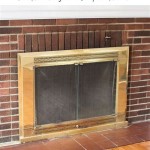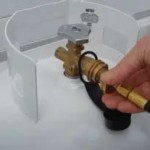Rustic Fireplace Designs: Embracing Natural Warmth and Character
Rustic fireplace designs evoke a sense of warmth, comfort, and connection to nature. They are characterized by the use of natural materials, rugged textures, and a focus on highlighting the inherent beauty of wood, stone, and metal. These fireplaces often serve as the focal point of a room, creating a cozy and inviting atmosphere. Understanding the key design elements and variations within rustic fireplace design can facilitate the incorporation of this aesthetic into various architectural styles and personal preferences.
The appeal of rustic fireplaces lies in their ability to create a sense of history and permanence. They often incorporate reclaimed materials, adding to their character and sustainability. The imperfection inherent in natural materials is embraced, as it contributes to the overall charm and uniqueness of each fireplace. This design style is a departure from sleek, modern aesthetics, opting instead for a more organic and tactile experience.
Material Selection: The Foundation of Rustic Design
The selection of materials is paramount in achieving a successful rustic fireplace design. Stone, wood, and metal are the primary components, and their integration determines the overall aesthetic. The types of stone, wood, and metal used, along with their finishes, significantly influence the fireplace's appearance and the ambience it creates.
Stone: Stone is a fundamental element of many rustic fireplaces, providing a sense of solidity and connection to the earth. Common types of stone used include fieldstone, river rock, flagstone, and stacked stone. Fieldstone, with its irregular shapes and natural variations, offers a particularly authentic rustic feel. River rock, smoothed by water erosion, provides a more refined yet still natural look. Flagstone, with its flat, layered appearance, can create a more structured and contemporary rustic design. Stacked stone, which involves arranging stones in horizontal layers, offers a visually striking and textured surface.
The color and texture of the stone are crucial considerations. Earthy tones like browns, grays, and beiges are commonly used to complement the natural setting. The texture can range from rough and jagged to smooth and polished, influencing the overall aesthetic. The arrangement of the stones also affects the visual impact. Random patterns contribute to a more organic look, while structured arrangements convey a sense of order and intentionality.
Wood: Wood plays a significant role in rustic fireplace designs, often used for mantels, surrounds, and accent pieces. Reclaimed wood, with its weathered appearance and history, is a popular choice. The wood's grain, knots, and imperfections add character and tell a story. Common types of wood used include oak, pine, cedar, and barnwood. Oak, with its strength and distinctive grain, is a durable and aesthetically pleasing option. Pine, with its warm color and affordability, is a versatile choice. Cedar, with its aromatic scent and natural resistance to decay, is suitable for both indoor and outdoor applications. Barnwood, salvaged from old barns and structures, offers a unique and authentic rustic appeal.
The finish of the wood also impacts the overall design. Natural finishes, such as oil or wax, preserve the wood's natural color and texture. Stains can be used to enhance the wood's grain or to complement the surrounding décor. Distressed finishes, which create a worn and aged look, further contribute to the rustic aesthetic.
Metal: Metal accents can add a touch of industrial chic to a rustic fireplace design. Wrought iron, copper, and steel are commonly used for fireplace doors, screens, and decorative elements. Wrought iron, with its handcrafted appearance, evokes a sense of old-world charm. Copper, with its warm tones and patina, adds a touch of elegance. Steel, with its strength and durability, can be used for both structural and decorative purposes.
The finish of the metal is also an important consideration. A dark, matte finish complements the natural tones of stone and wood. Hammered metal, which features a textured surface, adds visual interest and tactile appeal. Patina finishes, which create an aged and weathered look, further enhance the rustic aesthetic.
Design Variations: Exploring Different Rustic Styles
Within the broader category of rustic fireplace designs, several sub-styles cater to different preferences and architectural contexts. These variations offer different interpretations of the rustic aesthetic, allowing for customization and personalization.
Mountain Rustic: This style draws inspiration from mountain lodges and cabins, emphasizing ruggedness and a connection to the natural environment. It typically features large, imposing stone fireplaces with massive wood mantels. The stone is often left in its natural state, with minimal processing. The wood used is often rough-hewn and features prominent knots and cracks. Metal accents are typically minimal, focusing on functionality rather than ornamentation. The overall effect is one of strength, durability, and a sense of being immersed in nature.
Farmhouse Rustic: This style evokes a sense of warmth, comfort, and simplicity. It often incorporates reclaimed materials, such as barnwood and salvaged bricks. The fireplaces tend to be smaller in scale than those in mountain rustic designs. The stone or brick is often painted or whitewashed to create a lighter and brighter look. The wood mantels are often more refined, with smoother surfaces and simpler shapes. Metal accents may include vintage-inspired fireplace tools and screens.
Coastal Rustic: This style blends rustic elements with coastal influences, creating a relaxed and inviting atmosphere. It typically features lighter colors, such as whites, blues, and grays. The stone or brick may be painted or whitewashed, or it may be replaced with materials such as driftwood or seashells. The wood mantels are often made from reclaimed wood with a weathered appearance. Metal accents may include nautical-themed decorations, such as anchors and ropes.
Modern Rustic: This style combines rustic elements with clean lines and contemporary design principles. It typically features a minimalist aesthetic, with a focus on highlighting the natural beauty of the materials. The stone or brick is often used sparingly, as an accent rather than the dominant feature. The wood mantels are often sleek and streamlined, with minimal ornamentation. Metal accents are often used to create a sense of contrast and visual interest.
Considerations for Implementation: Planning and Execution
Implementing a rustic fireplace design requires careful planning and execution. Factors such as room size, architectural style, and budget must be considered. Proper installation is also crucial to ensure safety and functionality.
Size and Proportion: The size of the fireplace should be proportionate to the size of the room. A large, imposing fireplace can overwhelm a small room, while a small fireplace may be lost in a large room. The height of the mantel should also be considered, ensuring that it is at a comfortable viewing height. The depth of the fireplace should be sufficient to accommodate the firebox and chimney, while also allowing for adequate airflow.
Architectural Harmony: The fireplace design should complement the existing architectural style of the room. A rustic fireplace may not be appropriate in a sleek, modern home. Consider the existing materials, colors, and textures in the room and choose a fireplace design that harmonizes with them. For example, a farmhouse rustic fireplace would be a good fit in a traditional farmhouse-style home, while a modern rustic fireplace would be more appropriate in a contemporary home.
Safety and Functionality: Safety is paramount when installing a fireplace. Ensure that the fireplace is installed in accordance with local building codes and regulations. The chimney should be properly sized and constructed to ensure adequate draft. The firebox should be made of fire-resistant materials and should be properly insulated. A fireplace screen should be used to prevent sparks from escaping the firebox. Regular maintenance, such as chimney cleaning and inspection, is also essential to ensure safety and functionality.
Budget and Timeline: Establishing a realistic budget and timeline is crucial for a successful fireplace project. The cost of materials, labor, and permits can vary significantly depending on the complexity of the design and the location of the project. Obtain multiple quotes from qualified contractors and compare prices before making a decision. Factor in potential delays, such as weather conditions or material shortages, when creating a timeline. A well-planned and executed project will result in a beautiful and functional rustic fireplace that will be enjoyed for years to come.
In conclusion, rustic fireplace designs offer a diverse range of options for creating a warm, inviting, and character-filled living space. By carefully considering the materials, design variations, and implementation factors, homeowners can successfully integrate this aesthetic into their homes and enjoy the timeless appeal of a rustic fireplace.

65 Best Stone Fireplace Design Ideas To Ignite Your Decor Designs Home Farmhouse

50 Sensational Stone Fireplaces To Warm Your Senses Home Fireplace Rustic Farmhouse Timber Frame Interior

Nice Stone Fireplace Home Design Corner

A Rustic Fireplace Like Really Is Very Good Idea Architectural Digest

19 Stunning Rustic Living Rooms With Charming Stone Fireplace Room Design Family Farm House

20 Rustic Stone Fireplace Ideas For Design Inspiration Field Mag

Rustic Fireplace Designs Ideas By Modus

A Rustic Fireplace Like Really Is Very Good Idea Architectural Digest

Warm Up Your Home With An Awesome Stone Fireplace

Your Guide To Rustic Design








